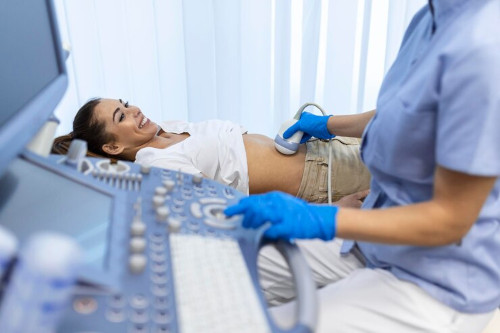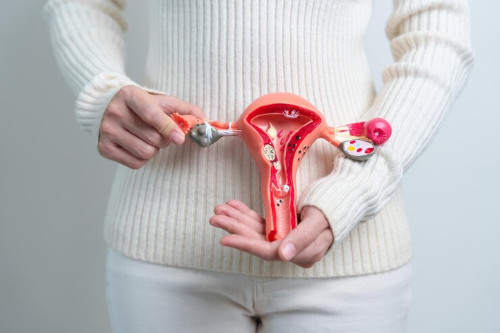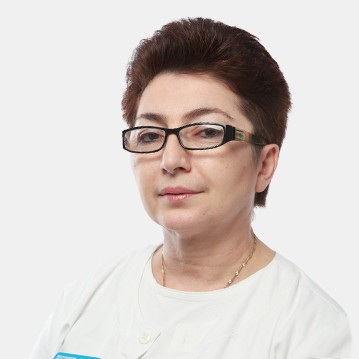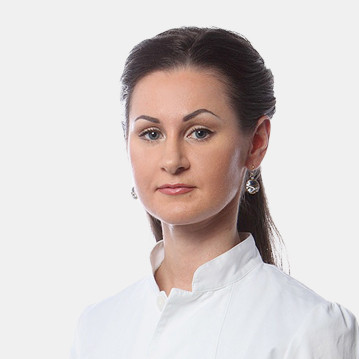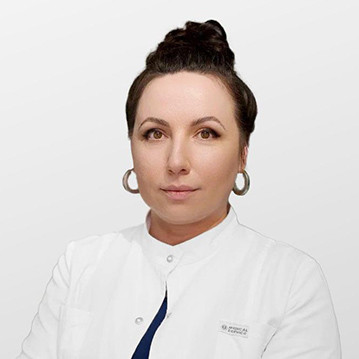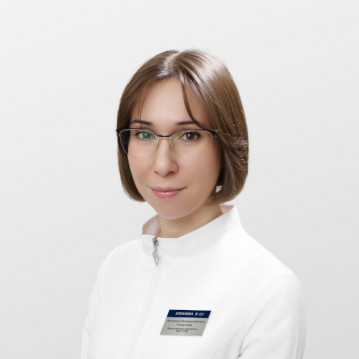Cervical Erosion and Ectopy
Cervical ectopy and erosion are conditions that occur in every second woman. They are often discovered by chance, during preventive examinations. If the changes are left unchecked, in 10-15% of cases they can develop into a precancerous condition. It is important to know when there is nothing to worry about and when medical intervention is required.

specialists

equipment

treatment
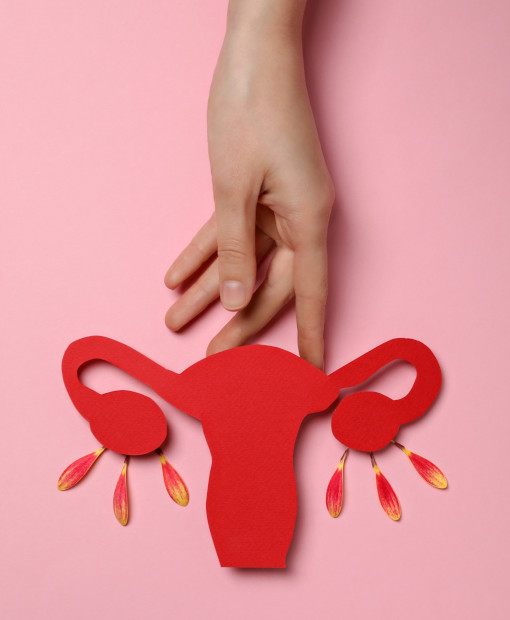
What is ectopia and erosion of the cervix?
Ectopia is a condition in which the cells of the inner epithelium of the cervix are located on its outer surface. This is a normal condition, often found in young women. Causes may include congenital features or hormonal changes, such as during puberty, pregnancy, or when using hormonal contraceptives. Ectopia usually does not cause symptoms and does not require treatment unless accompanied by inflammation or other complications.
Erosion is damage to the mucous membrane of the cervix. This condition can be caused by inflammation, injury, or infection, including the human papillomavirus (HPV). A doctor can see uterine pathology as an area of damaged tissue that stands out against the healthy surface.
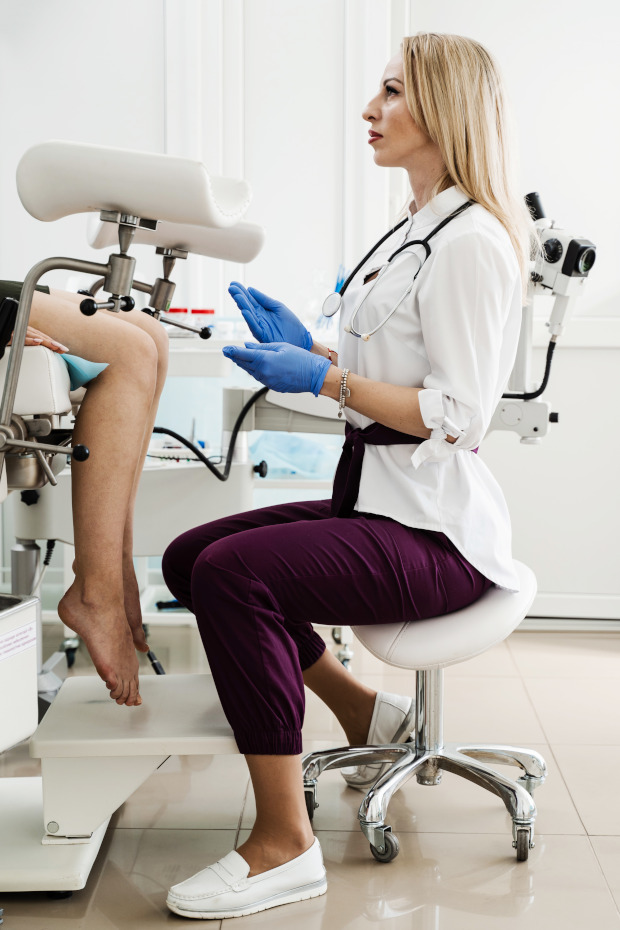
Cervical erosion can be different depending on the causes and stage. For proper therapy and diagnosis, it is important to consider how the disease manifests itself and how long it has existed.
True erosion
This is an acute injury to the mucous membrane of the cervix, which looks like an open wound.
Causes:
- Mechanical injuries (e.g. after gynecological procedures)
- Infections (chlamydia, trichomonas, herpes virus)
- Chemical effects (aggressive intimate hygiene products)
Signs:
- Bright red area of the mucous membrane with swelling
- Bloody discharge, especially after sex
- Discomfort or burning in the lower abdomen
True erosion of the cervix is visible already in the early stages during examination. Without therapy, it can heal up to 2-3 weeks or become permanent, for example, pseudo-erosion.
Pseudo-erosion (ectopia)
When damaged tissue is overgrown with columnar epithelial cells (usually located inside the cervix), pseudo-erosion is formed. This is an adaptation of the body caused by:
- Hormonal changes (adolescence, pregnancy, contraceptives)
- Chronic inflammation
How it manifests itself:
- Smooth, bright red surface on the mucous membrane
- Usually there are no symptoms, but there may be mucous or purulent discharge
- Increased risk of secondary infections
Pseudo-erosion of the cervix can persist for years. To clarify the diagnosis, a colposcopy and smear analysis are performed.
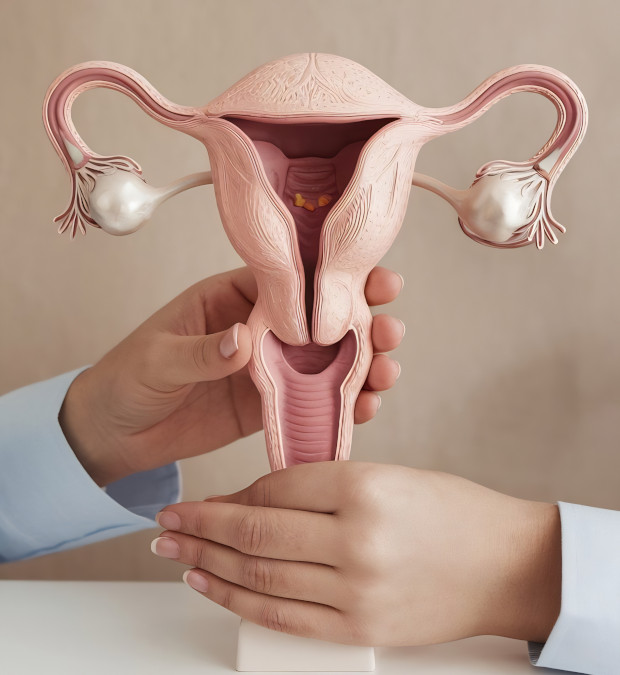
Physiological erosion
Erosion of the cervix caused by natural hormonal changes. Often found in girls and pregnant women.
Features:
- Proceeds without pain and inflammation
- Disappears on its own when the hormonal background stabilizes (for example, after childbirth)
It is diagnosed only during examination and does not require therapy.
Complicated erosion
Erosion of the uterus with inflammation or infection requires immediate therapy.
Possible complications:
- Secondary infection
- Tissue scarring
- Dysplasia (precancerous condition)
Signs:
- Purulent discharge with an unpleasant odor
- Pain in the lower abdomen
- Bleeding on contact
Therapy for complicated pathology includes antibacterial and antiviral drugs.

The symptoms of these cervical disorders vary.
Ectopy
Usually this condition is asymptomatic and is only detected during a gynecological examination. However, sometimes the following may occur:
- Increased discharge. The amount of mucus discharge may increase, and the color may become lighter or more transparent.
- Discomfort after sex. Mild irritation or discomfort in some women.
- Tendency to infections. In rare cases, ectopy can lead to inflammation, such as vaginitis or cervicitis.
Ectopy is usually considered normal and does not require treatment unless it causes discomfort or inflammation.
Erosion
Unlike ectopia, cervical erosion can be a sign of more serious problems and manifest itself with the following symptoms:
- Bleeding after contact. Blood discharge after sex or examination
- Unusual discharge. Purulent-mucous discharge with an unpleasant odor is often observed, especially with infections
- Painful sensations. Pain during intercourse caused by damage to the mucous membrane
- Burning and itching. Usually associated with inflammation or infection
If the pathology is infectious in nature, general symptoms of inflammation may be added: pain in the lower abdomen or fever.
Treatment of ectopia and erosion of the cervix
Drug (conservative) therapy
If you need to deal with inflammation or infection, conservative medications are used:
- Antibiotics to fight bacteria, such as azithromycin or ofloxacin
- Antiviral drugs, such as acyclovir, to eliminate viruses (herpes or HPV)
- Anti-inflammatory suppositories or ointments
- Preparations with beneficial bacteria to restore microflora, such as acylact
Sometimes medications are not enough, and then surgical methods are used to remove damaged tissue and speed up healing.
Surgical treatment
The main methods of cervical surgery:
- Freezing with liquid nitrogen (cryodestruction). The procedure is quick, almost does not affect healthy tissues
- Laser removal. The laser evaporates damaged cells, leaving no traces
- Removal with radio waves. Tissues are processed without blood and pain, healing occurs quickly
- High-frequency current (electrocoagulation). An accurate method that protects healthy tissue
- Conization of the cervix. The doctor cuts out a small area for therapy and accurate diagnosis
The choice of method depends on the size and location of the lesion, as well as the general health of the woman. It is important to discuss all options with the doctor to choose the most suitable one.
Laser therapy
Laser therapy is a gentle and effective treatment method. The laser removes damaged cells, starts the tissue regeneration process and simultaneously “seals” the vessels, which prevents bleeding.
The procedure is quick, taking 15–30 minutes, and does not require hospitalization. Recovery takes about a month, and the risk of scarring is minimal, so the method is suitable even for women planning a pregnancy.
Diathermocoagulation
Diathermocoagulation is a method in which damaged tissue is removed using electric current. This method is often used in complex cases of cervical pathology. The procedure is performed with local anesthesia, as it can cause discomfort.
Complete healing takes up to 8 weeks. However, due to the risk of scarring, the method is not recommended for women who have not given birth.
Radio wave surgery
High-frequency radio waves help to carefully remove affected areas without damaging healthy tissue. This method is distinguished by:
- Minimal trauma
- No scars
- Fast healing (2-3 weeks)
Radio wave surgery is especially suitable for young women who are planning to have children.
Cryocoagulation
Cryocoagulation is freezing of damaged tissues with liquid nitrogen. After the procedure, damaged cells gradually die off, and new ones appear in their place.
The procedure is painless and takes about 10-15 minutes. Full recovery lasts up to 4 weeks. The method is well suited for small foci of cervical pathology, but may be less effective for large lesions.
Table: Comparison of erosion treatment methods
| Method | Description of the method | Advantages | Disadvantages | Who is it suitable for? | Recovery period |
|---|---|---|---|---|---|
| Laser therapy | The laser removes damaged cells and stimulates tissue healing. | Painless, minimal risk of scarring, suitable for women planning pregnancy. | Ineffective for deep cervical erosions. | Young women planning to have children. | 4–6 weeks |
| Diathermocoagulation | Electric current removes damaged tissue. | Affordability, high accuracy for significant lesions. | Pain, high risk of scarring, long recovery. | Women with severe forms of cervical erosion who do not plan to become pregnant. | 8 weeks |
| Radio wave surgery | Radio waves remove damaged tissues without damaging healthy ones. | Minimal trauma, no scars, suitable for pregnancy planning. | Requires specialized equipment. | Suitable for women of any age, especially those planning a pregnancy. | 2–3 weeks |
| Cryocoagulation | Freezing of tissues with liquid nitrogen, after which they are replaced with healthy ones. | Painless, suitable for minor lesions. | Ineffective for deep or large cervical pathologies. | Women with small foci of erosion that are not suitable for other treatment methods. | Up to 4 weeks |
| Drug (conservative) therapy | Use of anti-inflammatory, anti-infective and restorative drugs. | Non-invasive method, reduces inflammation and eliminates infections. | Ineffective for significant damage, requires a long course. | All women in the early stages of the disease or with infectious causes of cervical pathologies. | Individually, depends on the condition. |
The diagnosis of "erosion" is not a death sentence. Come to K+31 for diagnostics, and we will help you find a solution!
Advantages of treating cervical diseases in "K31" (Moscow):
- Modern methods of diagnosis and treatment
- Minimally invasive procedures, after which tissues heal faster
- Individual approach to each patient
After therapy, the clinic's doctors monitor the patient's condition to avoid relapses. Sign up for a consultation to choose the appropriate treatment method.
General information
Answers to popular questions
Doctors from the K+31 clinic answer:
Should I treat ectopia if it doesn't bother me?
In young girls, vaginitis often manifests itself as itching, redness, and discharge, which sometimes has an unpleasant odor. The causes can be different: poor hygiene, the use of soap that irritates the mucous membrane, or even the entry of a foreign body. If ectopia does not cause inflammation or discomfort, it does not need to be treated. But it is important to undergo regular checkups to rule out complications such as dysplasia.
Is it possible to get pregnant with erosion or ectopia?
Yes, ectopia and erosion of the cervix usually do not interfere with conception. But if there is inflammation or infection, it can affect fertility by making it difficult for sperm to pass through.
How does treatment affect pregnancy?
Modern methods, such as laser or radio waves, do not leave scars and are safe for future pregnancies. But methods with the risk of scarring, such as diathermocoagulation, can reduce the elasticity of the cervix, which is important to consider when planning children.
How often should I get tested if I had erosion?
After successful therapy, it is important to undergo a Pap test and colposcopy once a year. If HPV is detected, examinations are carried out every 6 months to notice possible changes in time.
Can erosion return after treatment?
Yes, uterine erosion can return if the causes of its occurrence are not eliminated. These can be chronic infections or hormonal imbalances. To avoid relapse, it is important to follow the doctor's recommendations and undergo regular examinations.
Is there a connection between erosion and lower abdominal pain?
Uterine erosion itself usually does not cause pain. But if inflammation or infection joins it, pain in the lower abdomen can be one of the symptoms.
Is it possible to play sports after erosion treatment?
After gentle methods, such as laser or radio wave therapy, sports can be resumed in 2-3 weeks. If more traumatic methods were used, such as diathermocoagulation, it is worth waiting 4-6 weeks until the tissue has completely healed.
Should I abstain from sex after treatment?
Yes, after treatment, doctors advise abstaining from sexual activity for 4-6 weeks or until the tissues are completely restored. The duration depends on the method of therapy and the condition of the cervix.
Is it possible to treat erosion with folk remedies?
No, folk remedies like douching or herbal infusions will not help get rid of cervical erosion. Moreover, they can worsen the condition by causing irritation, increased inflammation, or even infection.
Is it possible to treat erosion during menstruation?
No, therapy is carried out only after the end of menstruation, when the mucous membrane has completely recovered.
Is it possible to plan pregnancy with erosion?
Yes, cervical erosion will not prevent conception. But if there is inflammation or infection, it is important to treat them in advance to avoid problems during pregnancy.
When is it necessary to urgently see a doctor?
If you have bloody discharge after sex, pain in the lower abdomen, an unpleasant smell of discharge or severe discomfort, do not delay a visit to the doctor. These may be signs of complications.

This award is given to clinics with the highest ratings according to user ratings, a large number of requests from this site, and in the absence of critical violations.

This award is given to clinics with the highest ratings according to user ratings. It means that the place is known, loved, and definitely worth visiting.

The ProDoctors portal collected 500 thousand reviews, compiled a rating of doctors based on them and awarded the best. We are proud that our doctors are among those awarded.
Make an appointment at a convenient time on the nearest date
Price
Other services
Hormone therapy
Radio wave gynecology with the Surgitron deviceLaser therapy using the Photona device
Sling operations Ectopic pregnancy Delayed menstruation Removal of the uterus (hysterectomy) Thrush (vaginal candidiasis) Prolapse of the uterus and vagina Uterine polyp (endometrial polyp) Cervical dysplasia Adenomyosis Treatment of sexual infections Vaginitis (Colpitis) Erythroplakia of the cervix Endometritis Bacterial vaginosis Symphysitis (symphysiopathy) Vulvovaginitis Premenopause Uterine artery embolization for uterine fibroids Cervicitis Gynecologist consultation Dysmenorrhea (painful periods) Amenorrhea Removal of the ovaries (oophorectomy) Postmenopausal Sphinctermetry Treatment and intimate rejuvenation with the Fotona laser Adenomyosis (Endometriosis of the uterus) Vulvitis Vaginal surgeries Inflammation of the appendages (adnexitis, salpingo-oophoritis) Labiaplasty (labiaplasty) Bartholinitis Surgery to remove an ovarian cyst Prolapse (prolapse) of the uterus and vagina Hormone replacement therapy (HRT) First menstruation 7 days after embryo transfer Biochemical pregnancy IVF protein diet Day 5 after embryo transfer Follicles Bicornuate uterus and pregnancy Day 9 after embryo transfer 1 day after embryo transfer Age and Fertility 10 days after embryo transfer
